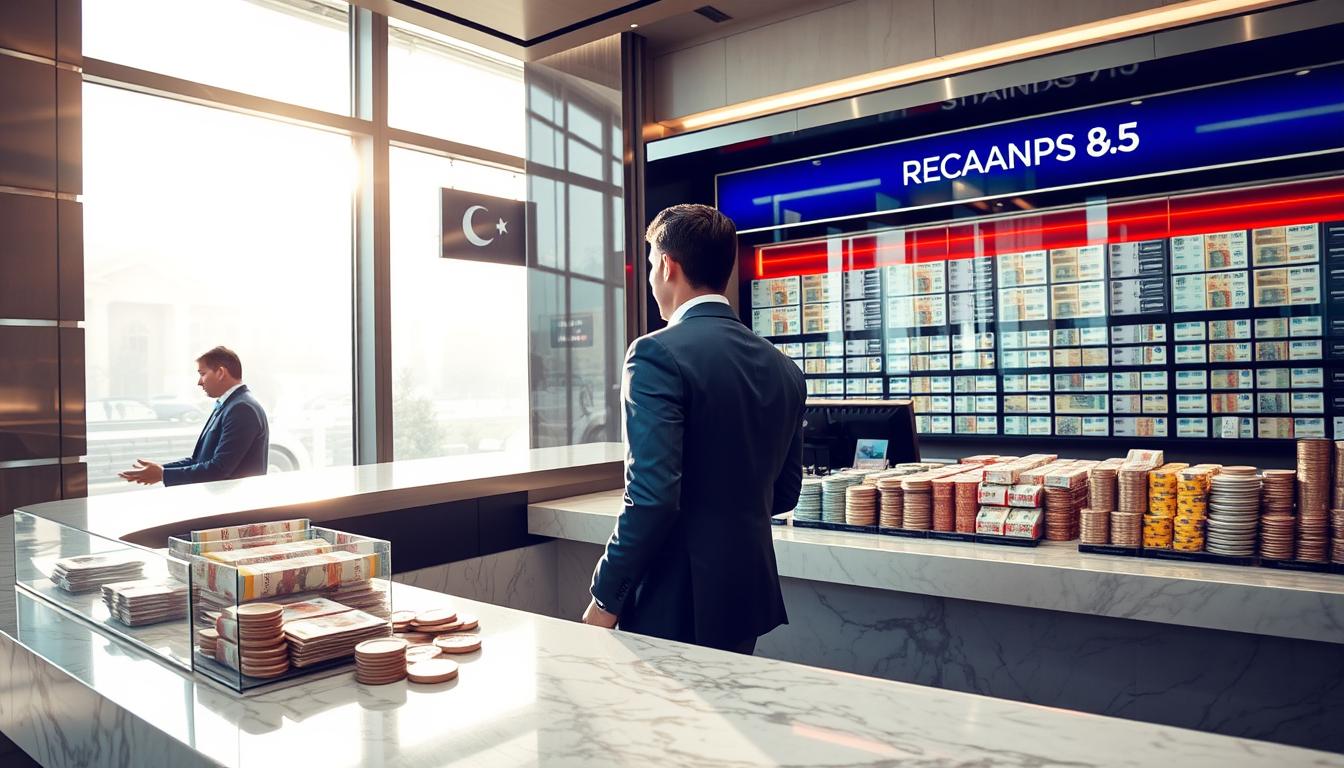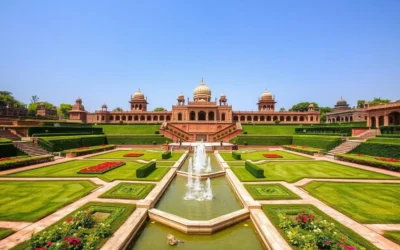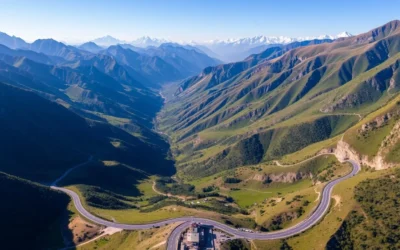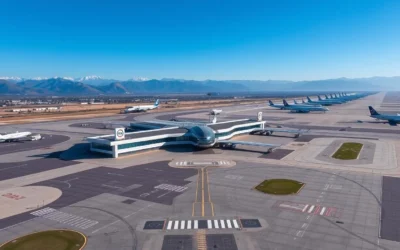✓ Accommodations✓ Flights✓ Rental Cars✓ Tours & Activities
When traveling abroad, understanding the local currency can save you time and money. The exchange rate plays a big role in how much you spend. For example, 1 USD currently equals 0.92495 PKR, the official Pakistani rupee rate. Knowing this helps you budget better.
Using a travel card can also make your trip smoother. Cards like Wise or Revolut offer secure transactions and low fees. They use the mid-market rate, which is often better than what you’d get at airports or banks.
Being aware of hidden fees and markups is key. Always compare rates and choose the best option for your needs. This way, you can focus on enjoying your trip without worrying about overspending.
Essential Currency Insights for Your Trip
Navigating foreign currencies can make or break your travel budget. Knowing how to get the best deal starts with understanding key rates and avoiding hidden fees. This section will help you master the basics of currency exchange and ensure you’re prepared for your trip.
Understanding Mid-Market Exchange Rates
The mid-market rate is the real exchange rate between two currencies. It’s the rate banks and financial institutions use when trading with each other. However, most currency services don’t pass this rate directly to customers. Instead, they add a markup, which can cost you more.
To avoid unnecessary fees, always compare the rate offered by your provider with the mid-market benchmark. Online tools like XE or OANDA can help you track live rates and make informed decisions.
Demystifying Currency Markups
Currency services often add markups to the mid-market rate, increasing the cost of your exchange. These markups can vary widely, so it’s essential to shop around. For example, airports and hotels typically offer less favorable rates compared to city center exchange shops.
Here’s how to ensure you’re getting a fair deal:
- Use online tools to track live exchange rates.
- Verify if the rate offered by an ATM or exchange provider is competitive.
- Compare rates from multiple providers before making a decision.
By staying informed, you can save money and focus on enjoying your trip.
Preparing for Currency Exchange Before You Travel
Planning your currency exchange ahead of time can make your trip smoother and more cost-effective. By taking a few simple steps before you leave, you can avoid unnecessary fees and ensure you’re ready for your journey.
Why Exchanging in Advance Can Save You Money
Exchanging a portion of your home currency before departure helps you sidestep inflated prices at airports or local exchange shops. This approach reduces onsite fees and transaction charges, saving you money in the long run.
Monitoring the mid-market rate is key to choosing the best moment to exchange money. Tools like XE or OANDA can help you track live rates and make informed decisions. “Exchanging at the right time can significantly lower your overall cost,” says a financial expert.
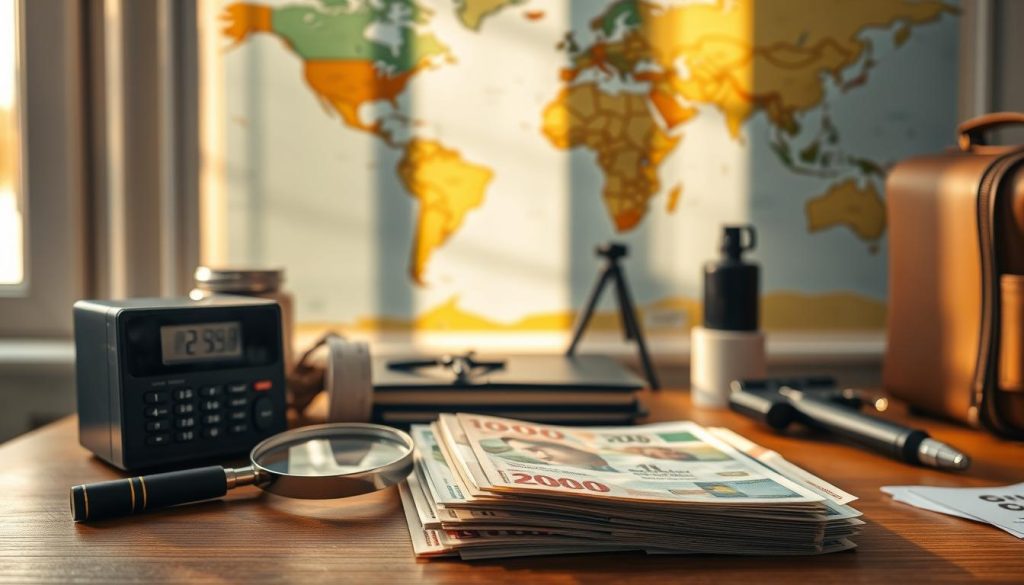
Preparation also limits your reliance on credit cards, which often come with foreign transaction fees. By having local currency on hand, you can avoid these extra charges and stick to your budget.
Here’s how to calculate an estimated budget:
- Account for daily expenses like meals, transportation, and entertainment.
- Include anticipated transaction fees from ATMs or card usage.
- Set aside a buffer for unforeseen costs.
For example, if you plan to spend $50 daily on meals and $20 on transportation, factor in a 3% transaction fee for card payments. This way, you’ll have a clear picture of your total cost.
By preparing in advance, you can focus on enjoying your trip without worrying about overspending. A little planning goes a long way in making your journey stress-free and budget-friendly.
Tips for Exchanging Money in Pakistan at ATMs and Merchants
Managing your finances while traveling can be simplified with the right strategies. Whether you’re withdrawing cash or making purchases, understanding how to navigate local systems can save you money and hassle.
Avoiding Dynamic Currency Conversion
When using your card abroad, you might be offered the option to pay in your home currency instead of the local one. This is called Dynamic Currency Conversion (DCC). While it might seem convenient, it often comes with unfavorable exchange rates and hidden fees.
Always insist on being charged in the local currency to avoid these extra costs. For example, if you’re prompted to pay in USD instead of PKR, decline the option. This ensures you get the best rate available.
Local ATM Withdrawal Strategies
Using ATMs is one of the most efficient ways to get local currency. However, not all ATMs are created equal. Stick to bank-affiliated machines, as they are more secure and less likely to charge excessive fees.
Here are some practical steps to maximize your cash withdrawals:
- Choose ATMs located inside bank branches for added security.
- Check for additional fees from both the local operator and your home bank.
- Withdraw larger amounts less frequently to minimize transaction charges.
| ATM Provider | Withdrawal Limit | Fee per Transaction |
|---|---|---|
| Standard Chartered | PKR 50,000 | PKR 600 |
| MCB Bank | PKR 100,000 | PKR 800 |
| Bank Alfalah | PKR 200,000 | PKR 1,000 |
By following these tips, you can ensure a smooth and cost-effective experience when handling your finances abroad. A little preparation goes a long way in making your trip stress-free.
Travel Payment Options: Cards and Cash Strategies
Choosing the right payment methods can make your trip smoother and more budget-friendly. Whether you prefer cards or cash, understanding the pros and cons of each can save you time and money. This section explores how to balance both options effectively.
Using Debit and Credit Cards Effectively
Cards are a convenient way to handle payments while traveling. They eliminate the need to carry large amounts of cash and often provide better security. However, it’s essential to manage transaction fees to avoid unnecessary costs.
Here are some tips for using cards wisely:
- Opt for travel cards like Wise or Revolut, which offer competitive exchange rates and low fees.
- Always pay in the local currency to avoid dynamic currency conversion charges.
- Check with your bank about foreign transaction fees before your trip.
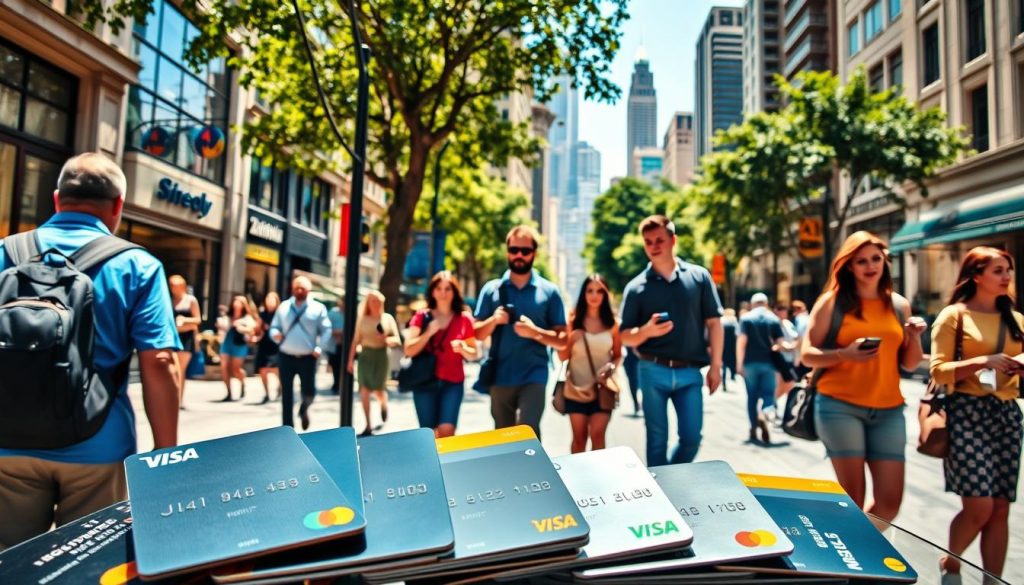
By planning ahead, you can minimize fees and make the most of your card payments. This approach ensures you have a seamless experience without overspending.
The Importance of Carrying PKR Cash
While cards are widely accepted, cash remains essential for smaller transactions. Many local merchants, especially in rural areas, prefer cash payments. Having local currency on hand ensures you’re prepared for any situation.
Here’s why carrying cash is beneficial:
- It’s often the only way to pay for small purchases, tips, or transportation.
- You avoid the hassle of finding ATMs or dealing with card acceptance issues.
- It provides a backup in case of card malfunctions or emergencies.
To get the best rates, withdraw cash from bank-affiliated ATMs instead of exchanging currency at airports or hotels. This strategy saves you money and ensures you have enough cash for your needs.
| Payment Method | Pros | Cons |
|---|---|---|
| Debit/Credit Cards | Secure, convenient, widely accepted | May incur foreign transaction fees |
| Cash | Essential for small purchases, no fees | Risk of loss or theft |
By combining both cards and cash, you can enjoy a stress-free trip. This balanced approach ensures you’re ready for any payment scenario while keeping your budget intact.
How to Use a Travel Card for Seamless Currency Conversion
Travel cards are a game-changer for managing money abroad. They simplify currency conversion and reduce fees, making your trip smoother and more cost-effective. With features like mid-market exchange rates and app-based account management, these cards are a must-have for international travelers.
Features of Travel Money Cards
Travel money cards offer several advantages. They allow you to hold and spend in multiple currencies, eliminating the need for frequent exchanges. Most cards provide the mid-market exchange rate, which is often better than rates offered by banks or airports.
Here’s what makes these cards stand out:
- Low or no foreign transaction fees.
- Free ATM withdrawals up to a certain limit.
- Easy account management through a mobile app.
For example, Wise allows you to hold and spend in over 40 currencies, while Revolut offers competitive rates and fee-free withdrawals. Both cards are highly rated for their convenience and cost-effectiveness.
Comparing Wise and Revolut Cards
When choosing a travel card, it’s essential to compare features. Wise and Revolut are two popular options, each with unique benefits. Wise is known for its mid-market exchange rate and low fees, while Revolut offers a sleek app and budgeting tools.
Here’s a detailed comparison:
| Feature | Wise | Revolut |
|---|---|---|
| Supported Currencies | 40+ | 30+ |
| Free ATM Withdrawals | Up to $350/month | Up to $300/month |
| Foreign Transaction Fee | 0% | 0% |
| Trustpilot Score | 4.2/5 | 4.3/5 |
Both cards are excellent choices, but your decision may depend on specific needs like currency support or withdrawal limits. By choosing the right card, you can save money and enjoy a hassle-free travel experience.
Comparing Currency Exchange Providers
Finding the right currency exchange provider can make or break your travel budget. Whether you choose online platforms or offline services, understanding the differences ensures you get the best rates and avoid unnecessary fees. Let’s explore the pros and cons of each option to help you make an informed decision.
Online vs. Offline Currency Exchange Options
Online currency exchange platforms often offer competitive rates compared to physical providers. They use the mid-market rate, which is the real exchange rate without added markups. This makes them a cost-effective choice for your trip.
Offline providers, such as those at airports or hotels, may charge higher fees and offer less favorable rates. While they are convenient, they often come with hidden costs. “Always compare rates before committing to a provider,” advises a financial expert.
Here’s a breakdown of the key differences:
- Online Platforms: Lower fees, better rates, and easy access from anywhere.
- Offline Providers: Immediate service but often with higher markups and extra charges.
To make sure you’re getting the best deal, research and read reviews about the provider. Established services like Wise or Revolut are known for their reliability and transparency.
| Provider Type | Pros | Cons |
|---|---|---|
| Online Platforms | Competitive rates, low fees, convenient | Requires internet access, slight delay in transactions |
| Offline Providers | Immediate service, no internet needed | Higher fees, less favorable rates |
By comparing both options, you can select the best currency exchange service for your needs. A little research goes a long way in saving money and ensuring a smooth trip.
Understanding Transaction and Conversion Fees
Handling transaction fees wisely can keep your travel budget intact. Whether you’re withdrawing cash or making purchases, fees can add up quickly. Knowing how to navigate these costs ensures you don’t overspend.
ATM Fees and Foreign Transaction Insights
Using ATMs abroad often comes with dual fees—one from your home bank and another from the local operator. These charges can vary widely, so it’s essential to choose bank-affiliated ATMs for better rates. For example, some banks charge a flat fee per withdrawal, while others take a percentage of the amount.
Foreign transaction fees are another common charge. These are typically 1-3% of the purchase amount and apply when you use your card in a different currency. To avoid these, consider using cards with no foreign transaction fees or opting for local currency payments.
Here’s how to minimize fees:
- Check your bank’s fee structure before traveling.
- Use ATMs inside bank branches for lower charges.
- Withdraw larger amounts less frequently to reduce per-transaction fees.
Tracking real-time market exchange rates can also help you make informed decisions. Apps like XE or OANDA provide live updates, so you know when to exchange money for the best rate.
Deciphering fee charges on your account statements is equally important. Look for terms like “foreign transaction fee” or “currency conversion charge” to understand where your money is going. This guide ensures you’re not caught off guard by hidden costs.
Finally, set a travel budget that factors in both expected and unforeseen fees. Include daily expenses, ATM withdrawal charges, and a buffer for emergencies. This approach keeps your finances on track and lets you focus on enjoying your trip.
Managing Your Budget with Effective Currency Strategies
Effective budget management starts with smart currency strategies. Planning ahead ensures you’re prepared for unexpected costs and can avoid unnecessary fees. Whether you’re at home or abroad, a flexible approach to budgeting can save you money and stress.

Planning for Unforeseen Expenses
Unexpected costs can arise during any trip, from emergency cash withdrawals to additional fees at the airport. To stay prepared, set aside a reserve fund specifically for these situations. This buffer ensures you’re not caught off guard by sudden expenses.
Tracking your spending is equally important. Use reliable websites or apps to monitor your budget in real-time. Tools like Wise or Revolut can help you track exchange rates and minimize foreign transaction fees.
Here are some actionable tips to manage your budget effectively:
- Build a flexible budget that accounts for exchange rate fluctuations.
- Plan ahead for fees at the airport or during emergencies.
- Keep a record of all fees and track spending via trusted websites or apps.
- Use travel cards to minimize foreign transaction fees.
By combining these strategies, you can ensure a stress-free trip. A little planning goes a long way in keeping your finances on track.
| Strategy | Benefit | Example |
|---|---|---|
| Flexible Budget | Accounts for rate changes | Set aside 10% extra for fluctuations |
| Emergency Fund | Covers unexpected costs | Reserve $200 for emergencies |
| Travel Cards | Reduces fees | Use Wise for low foreign transaction fees |
Finally, always review your budget before and during your trip. Adjust as needed to ensure you’re staying within your limits. This proactive approach lets you focus on enjoying your journey without financial worries.
In-depth Look at Payment Infrastructure in Pakistan
Understanding the payment infrastructure in Pakistan can help you navigate transactions more efficiently. The country is experiencing a rapid shift toward digital payments, but cash remains a dominant force, especially in rural areas. This section explores the evolving landscape of payment methods and how you can adapt to it during your travels.
Digital Payment Trends and Mobile Wallets
Digital payment methods are transforming everyday transactions in Pakistan. Mobile wallets like Easypaisa and JazzCash are gaining popularity, offering convenient ways to pay for goods and services. These platforms are particularly useful for travelers, as they reduce the need to carry large amounts of cash.
Using a travel debit card alongside mobile wallets can enhance your payment flexibility. Many international cards are accepted in urban areas, making it easier to manage your travel money. However, always check for compatibility and fees before relying on these options.
The Continued Role of Cash in Local Markets
Despite the rise of digital payments, cash remains essential in many parts of Pakistan. Rural and traditional markets often prefer cash transactions, so it’s wise to carry local currency. This ensures you’re prepared for any situation, from small purchases to transportation.
To get the best rates, withdraw cash from bank-affiliated ATMs rather than exchanging at airports or hotels. This strategy saves you money and ensures you have enough cash for your needs. Combining both digital and cash-based methods provides a balanced approach to managing your finances.
Here’s how to integrate both strategies effectively:
- Use mobile wallets for convenience in urban areas.
- Carry cash for transactions in rural or traditional markets.
- Withdraw larger amounts less frequently to minimize ATM fees.
By understanding the payment infrastructure, you can enjoy a seamless and stress-free travel experience. A little preparation goes a long way in ensuring you’re ready for any payment scenario.
Pakistan: Ultimate Travelers Guide to Currencies & Payments
Effective travel money management starts with a clear step-by-step plan. By organizing your approach, you can avoid unnecessary fees and make the most of your budget. This guide will walk you through the process, ensuring you’re prepared for every transaction.
Creating a Comprehensive Plan
Start by researching exchange rates and fees. Use tools like XE or OANDA to track live rates and compare providers. This helps you identify the best time to exchange money and avoid hidden charges.
Next, choose a reliable provider for your foreign transaction needs. Services like Wise offer competitive rates and low fees, making them a smart choice for travelers. “Being informed about your options can save you significant money,” says a financial expert.
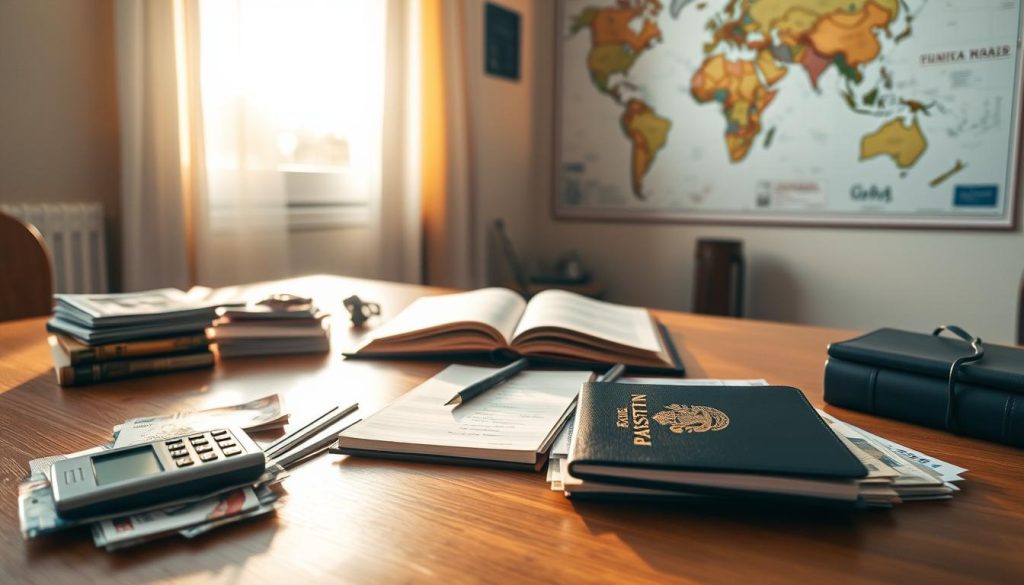
Pre-Trip Checklist
Before you leave, take these steps to ensure a smooth experience:
- Exchange a portion of your home currency to avoid inflated rates at airports.
- Set up a travel card like Wise for secure and cost-effective transactions.
- Notify your bank about your travel dates to prevent card issues.
During Your Trip
While traveling, monitor your spending and adjust your budget as needed. Use ATMs affiliated with banks to minimize withdrawal fees. Always choose the local currency to avoid dynamic currency conversion charges.
Keep a record of all transactions to stay on top of your expenses. This helps you identify any unexpected fees and adjust your spending accordingly.
Final Tips for Savings
By planning ahead and using tools like Wise, you can save money and enjoy a stress-free trip. Compare providers, track exchange rates, and stick to your budget for the best results.
Conclusion
Making informed decisions about your finances ensures a smooth and cost-effective trip. Understanding exchange rates and avoiding unnecessary fees can save you money and stress. Using a travel debit card is a smart choice for secure transactions and low-cost currency conversion.
Strategically managing atm withdrawals also helps minimize fees. Always choose bank-affiliated ATMs and withdraw larger amounts less frequently. This approach keeps your budget intact while providing enough cash for your needs.
Balancing digital payments with cash ensures you’re prepared for any situation. Mobile wallets are convenient in urban areas, while cash remains essential in rural markets. By combining both methods, you can enjoy a seamless travel experience.
Use this guide as your go-to resource for all money-related questions. With careful planning and the right tools, you can make every withdrawal and payment confidently. Stay informed, save money, and focus on enjoying your journey.
The above is subject to change.
Check back often to TRAVEL.COM for the latest travel tips and deals.
